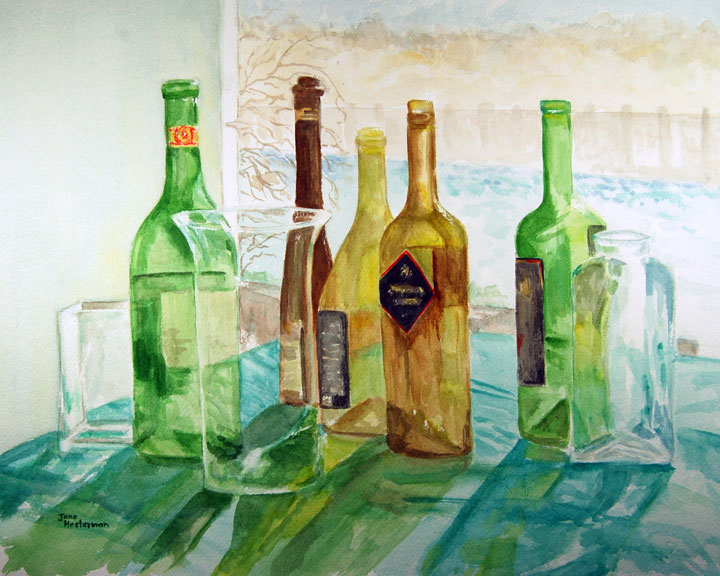WATERCOLOR TECHNIQUES

Watercolor Techniques |
Watercolor techniques are often used to apply color washes to drawings. Utilizing wash techniques is a good way to develop watercolor expertise. Quality materials will help—brushes that come to a point, non-fading professional paints, and blocks or stretched sheets of paper that control buckling of the paper. Cleanup is simple with watercolor, so practicing the painting techniques necessary for a successful painting can take place on the spur of the moment in a variety of locations.
Watercolor techniques must be developed so that the liquid nature of watercolor can be controlled. It flows and moves on the paper and can be dripped, splashed, sprayed, or painted for different effects. The amount of water added to the paint will affect the lightness or darkness of the pigment color. Mixing together paint colors, on a palette or right on the paper, can produce myriads of colors. Subtle shading can appear by dropping one color into a wet area of another color. Or one color can be glazed on top of another dried color. The transparency of watercolor allows the first layer of color to shine through. Clear water dropped or brushed into damp painted areas can create amazing effects.
Different types of watercolor paper will affect the way paint moves on its surface. Rough paper allows its texture to become a part of the painting, while hot-pressed paper is smooth and tends to show hard edges more. Cold-pressed paper generally has a fine-grained or semi-rough surface. This is the most popular type of watercolor paper. It has some texture, but is smooth enough not to distract from the subject of the painting. Watercolor paper is available in a variety of weights, hand-made or mold-made, and coated with different amounts of sizing. While most watercolor paper is made from cotton fibers, oriental papers lend some interesting textures to paintings. Colored papers also create a new mood to work with.
Brushes are used to apply watercolor paint, either very wet or somewhat dry, depending on what effect is desired. Wet-in-wet painting produces a watery, blended paint effect. Dry brush techniques generally produce finer lines and more detail. Because brushes come in a variety of shapes and sizes, many different brush strokes can be produced. There are round, flat, or fan brushes, as well as riggers or liners and bristle brushes. Some brushes are natural fur; other brushes are made of synthetic material. Both work well.
Other products allow new techniques when developing a watercolor painting. Ink, rubbing alcohol, liquid frisket, wax, salt, soap, and gesso affect the way the paint reacts on the paper. Some artists use plastic wrap, waxed paper, or thread or fabric to press against wet watercolor for a textured effect. Paper towels, tissues, sponges and wet brushes lift out paint. A toothbrush can be used to spatter paint, and sandpaper or a razor blade can be used to scrape paint off a dry painting.
Many watercolor artists find it helpful to join an artist organization such as the American Watercolor Society in order to participate in watercolor art exhibitions and learn new techniques from other watercolor artists.
